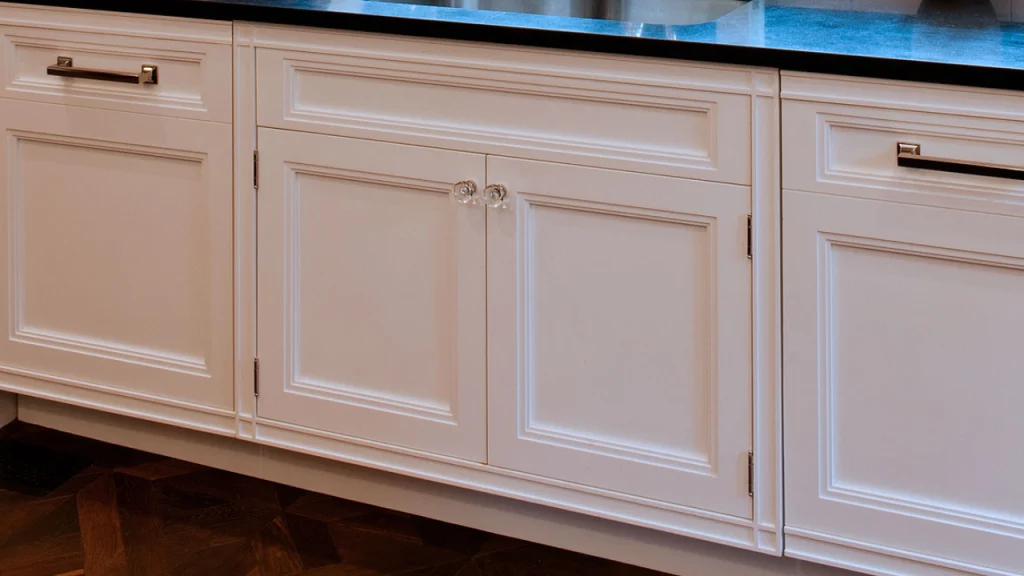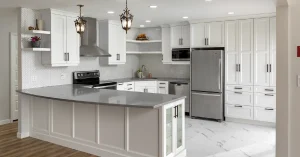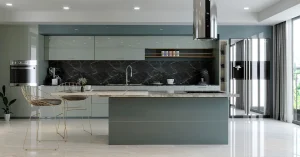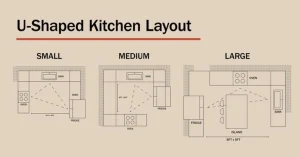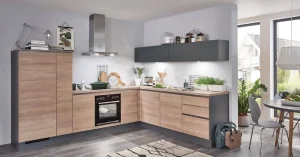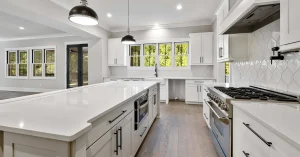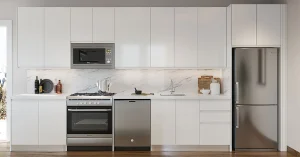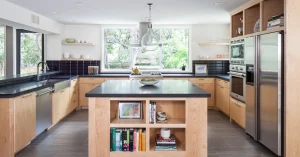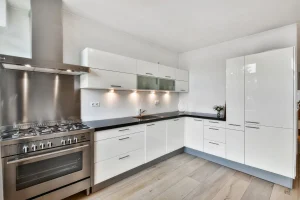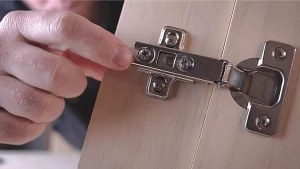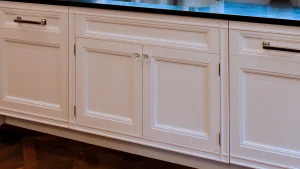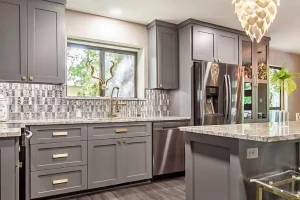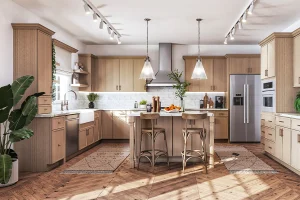A face frame is a structural element that is attached to the front of a traditional cabinet box, providing support and a specific aesthetic. It consists of horizontal and vertical pieces of wood, usually called rails and stiles, that form a “frame” around the cabinet opening. This frame is visible when the cabinet doors are closed, giving the cabinet a more traditional, classic look.
Key Features of a Face Frame:
- Added Support: The face frame adds extra structural stability to the cabinet, making it more rigid and durable.
- Visible Design Element: The frame is an aesthetic feature often associated with traditional or rustic cabinet styles.
- Door Mounting: Cabinet doors in framed construction are typically mounted to the face frame itself, with the hinges either exposed or partially concealed.
Types of Face Frame Cabinets:
- Full Overlay: In this design, the cabinet doors cover most of the face frame, leaving only a small portion visible. This style offers a more contemporary appearance while retaining the support of the frame.
- Partial Overlay: The doors only cover part of the face frame, leaving a larger portion visible. This is more common in older or traditional designs.
- Inset Doors: With inset cabinetry, the doors sit flush within the frame itself, creating a smooth, seamless look. This requires precise craftsmanship but delivers a high-end, custom appearance.
Advantages of Face Frame Cabinets:
- Sturdiness: The frame makes the cabinet box more rigid and helps prevent warping over time.
- Classic Look: Face frames provide a traditional, familiar aesthetic that many homeowners prefer for farmhouse, cottage, or classic kitchen designs.
- Hinge Options: The face frame allows for more variety in hinge styles, including visible or partially concealed hinges, giving you flexibility in design.
Disadvantages of Face Frame Cabinets:
- Reduced Storage Space: The face frame slightly reduces the available storage space inside the cabinet, as it takes up room that would otherwise be open in a frameless design.
- Smaller Access Openings: Since the doors are mounted on the face frame, the opening of the cabinet is narrower, which can make it harder to access items inside.
Face Frame vs. Frameless Cabinets:
The main difference between face frame and frameless cabinets lies in the presence of the frame. Frameless cabinets, often referred to as “European-style” cabinets, do not have a face frame, resulting in a cleaner, more modern look with wider cabinet openings and more storage space.
Face frame cabinets are often chosen for their traditional appeal, while frameless cabinets are favored in modern and contemporary designs for their sleekness and functional advantages.
In summary, face frames are a key element of traditional cabinetry that not only adds structural support but also enhances the classic look of the cabinets. However, they do come with some trade-offs in terms of storage capacity and accessibility, which is why many homeowners are now turning to frameless options for more modern and functional kitchen designs.
